



Next: Summary
Up: Periodic Potentials in One
Previous: Mass overwhelms height
Figure 12:
Stability surface for the relativistic Mathieu potential with a sharpening third harmonic.
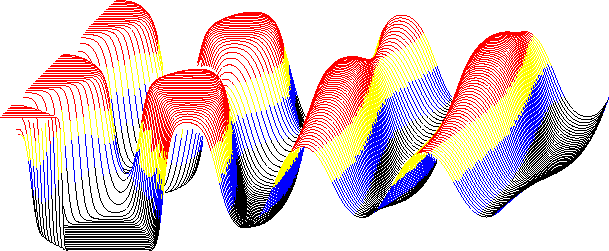 |
Figure 13:
The relativistic Mathieu potential sharpened by its third harmonic.
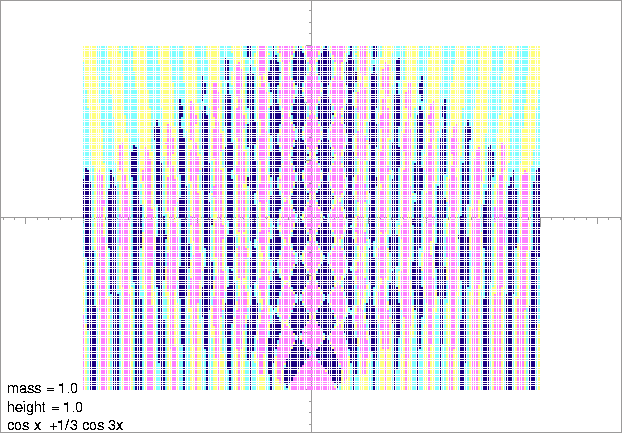 |
Figure 14:
Stability surface for the relativistic Mathieu potential with a flattening third harmonic.
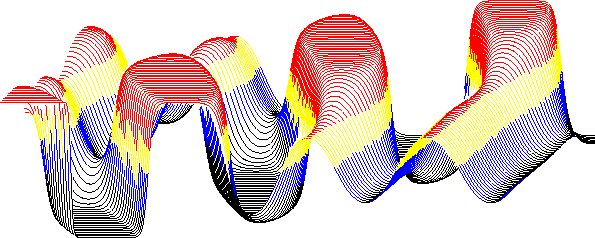 |
Figure 15:
The relativistic Mathieu potential flattened by its third harmonic.
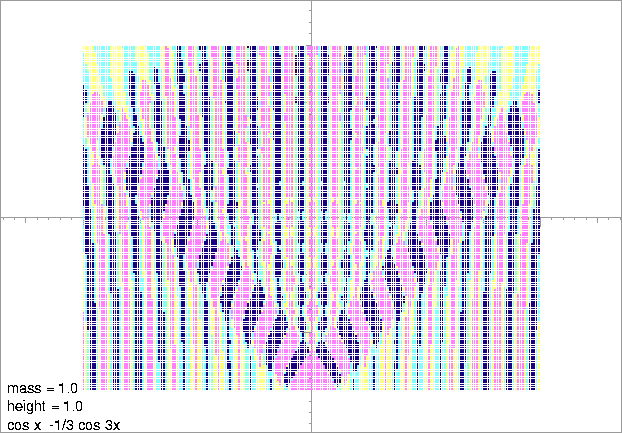 |
Figure 16:
Stability surface for the relativistic Mathieu potential with a delta-function-approximating potential
 .
.
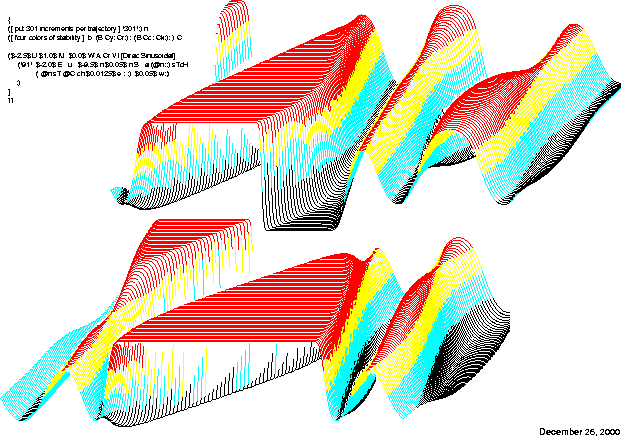 |
Figure 17:
Terms in the coefficient matrix plus one solution for the potential
 .
The potential is fairly flat on the bottom with a dent, while on top the peak approximating the delta function is quite conspicuous. The result is that negative energy solutions see a mild reflecting corrugation while positive energy solutions see an ever rising barrier through which they can tunnel.
.
The potential is fairly flat on the bottom with a dent, while on top the peak approximating the delta function is quite conspicuous. The result is that negative energy solutions see a mild reflecting corrugation while positive energy solutions see an ever rising barrier through which they can tunnel.
 |
Figure 18:
Contour map for the relativistic Mathieu potential with a delta function approximating potential
 .
The squares outline the regions whose perspective view is shown in Figure 16.
.
The squares outline the regions whose perspective view is shown in Figure 16.
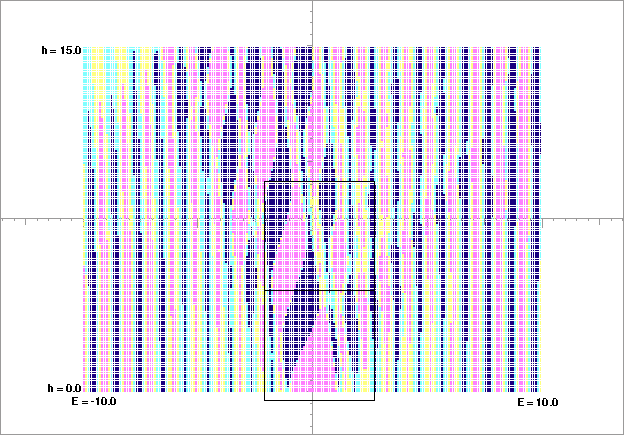 |
Finding a relativistic version of the Kronig-Penney model has created some consternation in the physics literature. The contour map of Figure 18 shows the result of approximating the delta function by the Fourier series
 .
A notable discrepancy develops between solutions with negative energy and those of positive energy.
.
A notable discrepancy develops between solutions with negative energy and those of positive energy.
Although the average potential in this approximation is zero, it reaches an appreciable maximum while retaining a minimum close to zero. After all, that is the desired result, but the environment which it presents to wave functions of opposite energies is quite different. Instead of a similar mass shell for the two alternatives, the shell has a negligible presence around the high peaks, while constituting a uniform barrier along its base.
The mass-dominated region in Figure 18 rises at a high angle on the left because of the relation of the factor 6/11 in the potential definition to the step size in the contour plotter. effects can be seen on the right but they are barely visible.




Next: Summary
Up: Periodic Potentials in One
Previous: Mass overwhelms height
Microcomputadoras
2001-01-09






![]() .
A notable discrepancy develops between solutions with negative energy and those of positive energy.
.
A notable discrepancy develops between solutions with negative energy and those of positive energy.